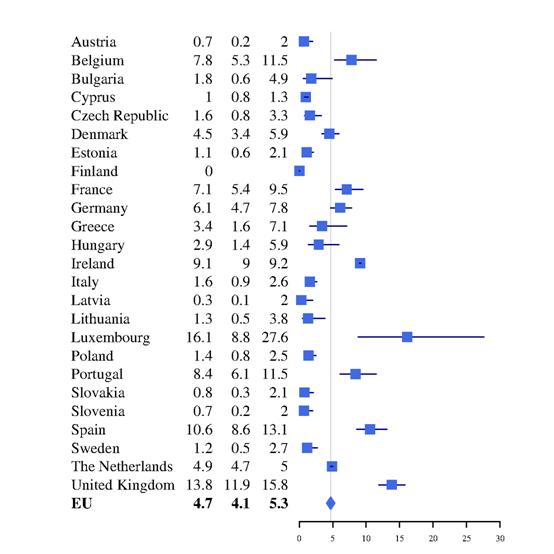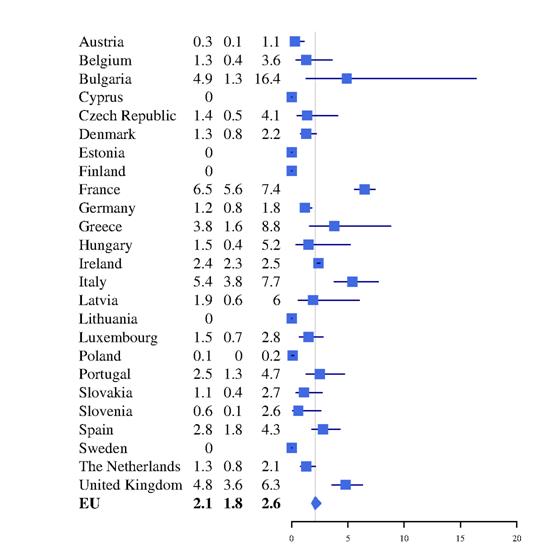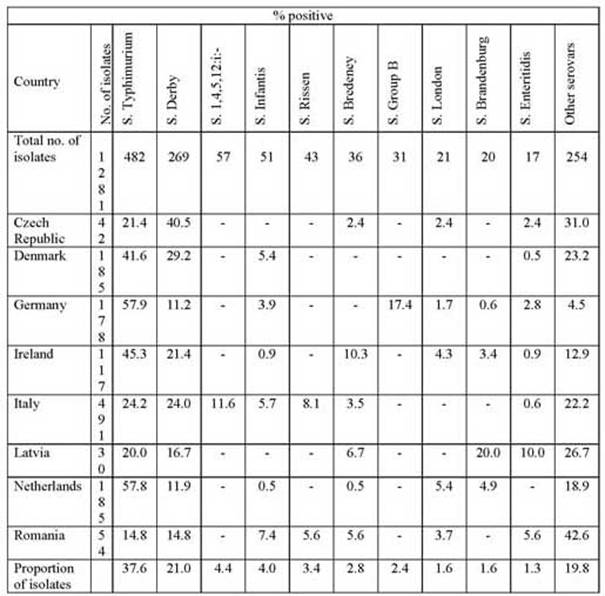Pigs and pork as a source of Salmonella in Europe
The average rate in which Salmonella was found in fresh pork in 2007 was 1.1% of the samples, ranging from 0% to 19.4% in reporting Member States (EFSA and ECDC, 2009a). Given the differences in the methodologies followed in each country the results cannot be directly comparable among the member states. However, there is a clear picture of the importance of the problem across the EU. Table 4 shows the most common serotypes isolated from fresh pork. It is clear that two serotypes are the most important, S. Typhimurium and S. Derby. S. Derby is a serotype well adapted to pigs, but with a very small number of isolations from outbreaks in the human population.

Figure1. Observed prevalence of slaughter pigs infected with S. Typhimurium in lymph nodes, with 95% confidence intervals, in the EU for 2006-2007 (EFSA, 2008a)

Figure 2. Observed prevalence of slaughter pigs infected with S. Derby in lymph nodes, with 95% confidence intervals, in the EU for 2006-2007 (EFSA, 2008a)
Table 4. Distribution of the ten most common Salmonella serovars in pork, 2007. Adapted from EFSA and ECDC (2009a)

Concluding, the most important serotype from a food safety perspective is S. Typhimurium. Taking into account the recent emergence of S. Typhimurium definitive type 104 (DT 104), that has a higher morbidity and mortality in humans than other S. Typhimurium organisms and its increasing prevalence in human populations (Griffith et al., 2006), the efforts towards monitoring and reducing the levels of the pathogen in the food production chain can be easily understood.
The results of the national surveillance programs referred above for 2006 and 2007 for S. Typhimurium and S. Derby are presented in figures 1 and 2 respectively. Looking at the two graphs, it seems that in most of the countries there is trade-off between the prevalence of the two serotypes. S. Typhimurium is more prevalent in the Northern-Western countries, while S. Derby is more prevalent in the Southern-Eastern countries. However, there is also an intermediate zone, which includes countries such as Germany and Luxembourg, where both serotypes are equivalently prevalent and close to the EU average prevalence. Although an explanation is not clearly described, a reasonable assumption can be made taking into account the climate differences of the countries. Although the microclimate in the farm is quite stable in modern pig farms to achieve better welfare and maximise production, the environmental conditions may affect the survival of the microorganism around the farm and the introduction into the farms by various means.